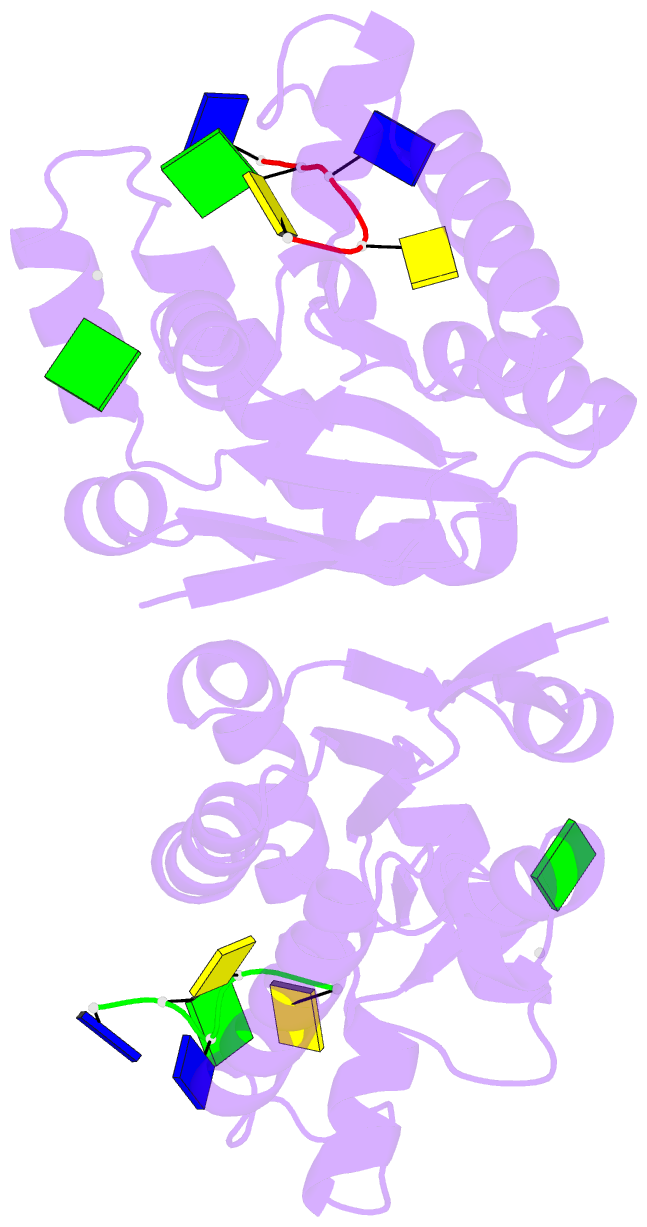Summary information and primary citation
- PDB-id
- 4mde; DSSR-derived features in text and JSON formats
- Class
- transferase-DNA
- Method
- X-ray (1.8 Å)
- Summary
- Structure of bacterial polynucleotide kinase product complex bound to gdp and DNA
- Reference
- Das U, Wang LK, Smith P, Jacewicz A, Shuman S (2014): "Structures of bacterial polynucleotide kinase in a Michaelis complex with GTP*Mg2+ and 5'-OH oligonucleotide and a product complex with GDP*Mg2+ and 5'-PO4 oligonucleotide reveal a mechanism of general acid-base catalysis and the determinants of phosphoacceptor recognition." Nucleic Acids Res., 42, 1152-1161. doi: 10.1093/nar/gkt936.
- Abstract
- Clostridium thermocellum polynucleotide kinase (CthPnk), the 5' end-healing module of a bacterial RNA repair system, catalyzes reversible phosphoryl transfer from an NTP donor to a 5'-OH polynucleotide acceptor. Here we report the crystal structures of CthPnk-D38N in a Michaelis complex with GTP•Mg(2+) and a 5'-OH oligonucleotide and a product complex with GDP•Mg(2+) and a 5'-PO4 oligonucleotide. The O5' nucleophile is situated 3.0 Å from the GTP γ phosphorus in the Michaelis complex, where it is coordinated by Asn38 and is apical to the bridging β phosphate oxygen of the GDP leaving group. In the product complex, the transferred phosphate has undergone stereochemical inversion and Asn38 coordinates the 5'-bridging phosphate oxygen of the oligonucleotide. The D38N enzyme is poised for catalysis, but cannot execute because it lacks Asp38-hereby implicated as the essential general base catalyst that abstracts a proton from the 5'-OH during the kinase reaction. Asp38 serves as a general acid catalyst during the 'reverse kinase' reaction by donating a proton to the O5' leaving group of the 5'-PO4 strand. The acceptor strand binding mode of CthPnk is distinct from that of bacteriophage T4 Pnk.





